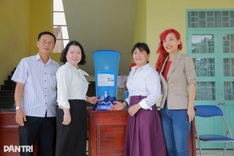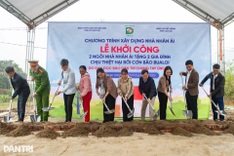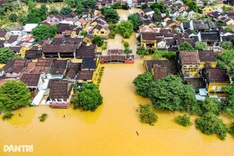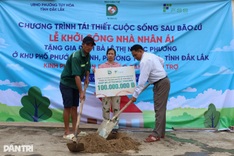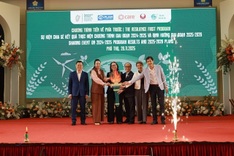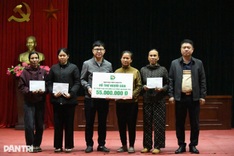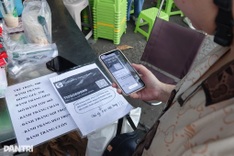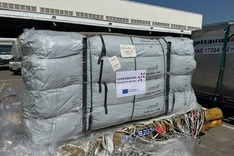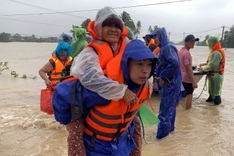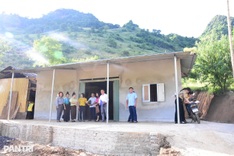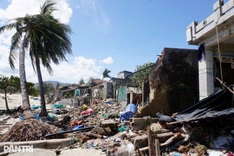The appeal was made at an emergency meeting on October 9, convened to share information on storms and floods in Vietnam with the Disaster Risk Reduction Partnership, which includes representatives from more than 20 international organisations and embassies.

Deputy Minister of Agriculture and Environment Nguyen Hoang Hiep speaks at the Disaster Risk Reduction Partnership meeting in Hanoi on October 9
Speaking at the meeting, Deputy Minister of Agriculture and Environment Nguyen Hoang Hiep said that since the beginning of the year, Vietnam had suffered from 20 types of natural disasters, including 11 storms and four tropical depressions, which left 238 people dead and nearly 400 injured.
Hundreds of thousands of houses collapsed, vast areas of crops were destroyed, and thousands of transport routes were blocked or eroded. Public infrastructure, particularly schools, clinics, and government offices, sustained severe damage.
“Preliminary estimates show the economic loss stands at around USD 1.3 billion, reducing Vietnam’s GDP by 0.2 per cent this year,” Hiep said, adding that if the flooding in Hanoi and Thai Nguyen were fully accounted for, total losses could reach several trillion dong.
The deputy minister described this year’s disasters as “highly unusual,” citing typhoon Bualoi, which moved rapidly across the sea before stalling on land, causing extensive impact. “The storm patterns have changed. Previously, early-season storms struck the North and gradually moved southwards, but this year, storms such as Wipha and Kajiki hit the central region, while late-season storms like Ragasa and Matmo moved northwards,” he said.
The northern and north-central regions have endured historic flooding. In Thai Nguyen, for example, the Cau River at Gia Bay rose to 29.9 metres, exceeding last year’s record level by 1.09 metres.
“Despite the government and people’s best efforts, some problems have gone beyond the capacity of local communities,” Hiep said. “We hope our partners can provide timely, accurate, and effective assistance, particularly essential supplies such as drinking water, food, and water filters. Housing and production recovery are also critical since almost everything has been swept away.”
At the meeting, Pauline Tamesis, United Nations Resident Coordinator in Vietnam, called for urgent aid to affected areas, stressing that the need was “enormous and immediate.” “Many families have lost their homes, livelihoods, and even loved ones. Our collective action can be a lifeline for those struggling in the aftermath of the disasters,” she said.
Last year, following typhoon Yagi, the Disaster Risk Reduction Partnership contributed USD 25 million and thousands of tonnes of relief goods to Vietnam.
The northern region is now reeling from typhoon Matmo’s aftermath. As of October 9, floods and landslides triggered by the storm have killed 10 people and left five missing, mostly due to flash floods. At its peak, nearly 223,000 houses were inundated, including about 200,000 in Thai Nguyen, 11,000 in Bac Ninh, 7,300 in Cao Bang, and 3,000 in Lang Son.
Flooding has also submerged or destroyed around 30,000 hectares of rice and crops, killed or washed away 2,280 cattle and 357,000 poultry, and severely disrupted provincial and rural transport routes.

